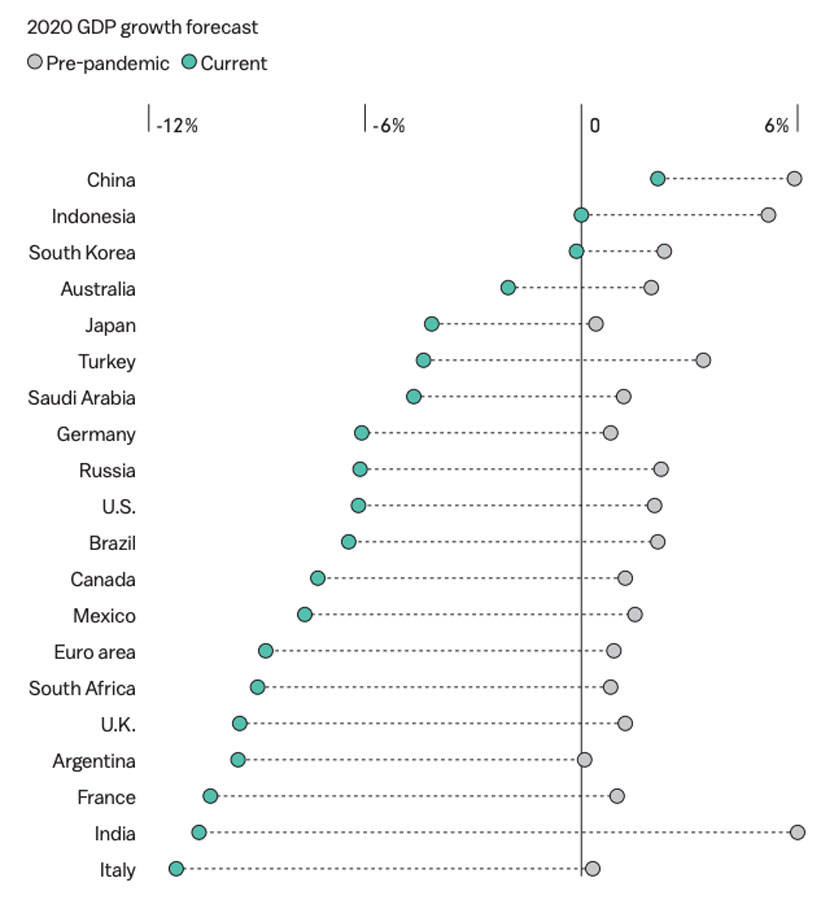Australia’s post-COVID recovery quicker than most: economists

VENICE BEACH, CA - JANUARY 30: Surfers work the Pacific Ocean waves just off the coast on January 30, 2017 in Venice Beach, California. (Photo by Bruce Bennett/Getty Images)
Australia’s bounce-back from the COVID-19 economic crisis is expected to be quicker than most other Asian economies, but experts say government financial support will be crucial to a full recovery.
Overall global GDP is expected to wind back by 4.7 per cent this year – the lowest since the World War II, compared to its pre-COVID-19 forecast of positive growth of 3.3 per cent.
Bloomberg Economics analysts don’t see output returning to its pre-pandemic peak until the second quarter of 2021.
But the economic downturn in Australia has been shallower, and recovery sooner than economists anticipated with positive economic growth of 1.9 per cent forecast for 2021.
Australia’s economy is forecast to experience a 2 per cent dip in gross domestic product in 2020, which is less than other countries in the Asia region.

“The better-than-expected containment of Australia’s domestic outbreak has enabled a gradual resumption of economic activity,” Bloomberg Economics analysts said in a report before the latest outbreak of the COVID-19 virus in Melbourne.
“Despite this, the economy is expected to need fiscal support to pivot from hibernation to full recovery.”
New Zealand’s virus-free status and resumption of normal economic activity supported by government spending is likely to lead to only a 3 per cent drop in its 2020 economic output.
Asia’s economic fightback
Worst affected by the COVID-19 pandemic in Asia is India, which is set to suffer a 10.6 per cent contraction in its economy.
This is because of India’s stringent lockdown measures, limited scope for monetary policy, and still rising number of virus cases, Bloomberg analysts said.
Japan’s economy is expected to shrink by 4.2 per cent in 2020, despite a record blitz of government spending, as it is exposed to the risk of a second wave of infection and job losses.
Thailand, Malaysia and Singapore are forecast to suffer declines of 5.5 to 6.5 per cent in their economies this year as a result of the pandemic.
Damage done to Thailand’s tourism sector and Singapore’s struggle to contain the virus are also seen as setbacks.
China is believed to fare the best in Asia this year in terms of economic growth, with a 2 per cent increase in GDP, as industrial production has bounced back, although a second wave of virus cases and a re-escalation of trade tensions are key risks.
Zero growth is forecast for Indonesia’s and South Korea’s economies in 2020, while the Philippines can expect a steep slump that trims 3 per cent off its economy this year.
Negative growth on the cards for EU
The European Union is expected to suffer negative economic growth of 8.8 per cent in 2020, as the virus triggers “the biggest peacetime economic shock on record” to the economic zone.
This is second only to the UK in the European region, which along with a 9.5 per cent drop in economic growth this year is grappling with its exit from the European economic bloc.
“We don’t expect output to reach its pre-virus peak until the end of 2022,” Bloomberg Economics analysts said.
Finally, the United States is likely to suffer a 6.2 per cent contraction in its economy this year. “Lockdowns, however, severely affected underlying fundamentals, dealing a significant blow to employment and wages,” the analysts said.

UNLOCK INSIGHTS
Discover the untold stories of emerging ASX stocks.
Daily news and expert analysis, it's free to subscribe.
By proceeding, you confirm you understand that we handle personal information in accordance with our Privacy Policy.








